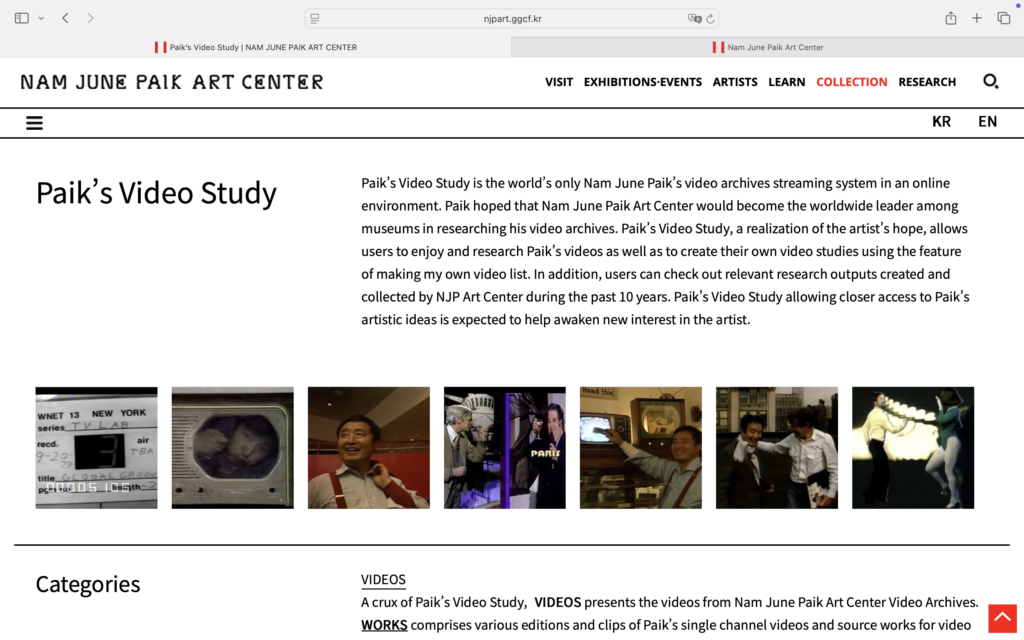By Mathilde Coué (PhD student)—reposted by Patrick Keller
From April 12 to 19, I traveled to Seoul, South Korea, to spend several days at the Nam June Paik Art Center. This visit served several purposes, foremost among them an exploratory investigation of the institution’s archives. The collections related to Mary Bauermeister, Shuya Abe, Ira Schneider, and Erik Andersch, among others, already suggested significant documentary potential for the period in question (1960–1970). The center has also made a large portion of its archives available online, offering access to a wide array of documents. While the search engine interface isn’t the most intuitive, the internal organization of the collections allows for relatively smooth navigation, and the option to download PDF inventories proves particularly helpful.

That said, several limitations need to be pointed out: the digitization remains incomplete, the quality of the scans is highly uneven, and most importantly, the documents can neither be downloaded nor exported—not even as simple references. This technical restriction makes the process of collecting and organizing materials considerably more complicated. That being said, it’s important to acknowledge how exceptional this level of access actually is: to my knowledge, no other museum offers such a wealth of remotely accessible documents related to Nam June Paik. The Smithsonian archives, for example, are only available on-site, with no option for reproduction. In the current research environment—especially in disciplines working under tight timelines and limited material resources—this kind of remote access is a crucial issue. It’s all the more frustrating, then, that these valuable resources are so difficult to handle in practice.
And the same goes for on-site consultation. Despite having a dedicated budget and prior coordination with the institution, access to the archives turned out to be quite limited: just two days, amounting to eight hours total—less time than the outbound flight alone. The selection of documents had to be finalized entirely in advance, and any requests to broaden the scope were consistently denied. As a result, after going through the few pre-selected files, a significant portion of the second day was lost to repeated attempts at accessing other materials that had initially been excluded. This protocol, combined with the geographic distance, makes it difficult to carry out truly in-depth scholarly work—at least according to my own understanding of what that entails.
Balancing out the constraints mentioned earlier, the trip nonetheless offered several pivotal moments—first and foremost, direct access to the works themselves. I was able to see several of Paik’s iconic pieces under excellent exhibition conditions, including TV Fish (1975), Moon is the Oldest TV (1965), and TV Garden (1974). The immersive and participatory logic that underpins these works makes direct engagement essential: observing them, walking around them, photographing them—all these actions help to reactivate their critical force. Additionally, a long conversation with Sooyoung Lee, a curator at the museum for nearly two decades, added a valuable dimension to the visit. We spoke about her own thesis work, reflected on Participation I, II, and III—which formed the basis of the temporary exhibition on view—and exchanged thoughts on Paik’s artistic gestures from both historical and curatorial perspectives.
Finally, a few understated—but no less striking—experiences are also worth noting: the discovery of the original circuit for the video synthesizer designed with Shuya Abe, the availability and openness of the staff, and the palpable tension between curatorial ambition and the reality of budget constraints. This latter aspect, visible in invisible trade-offs or underused resources, gives the experience a particular tone: that of an institution driven by genuine commitment, yet forced to navigate limited means.